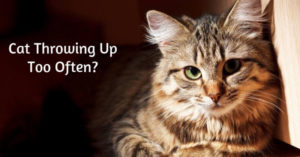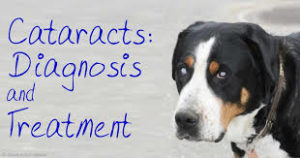Archive for September, 2019
Cats Do Vomit but What’s Normal and What’s Not?
 I woke up this morning to my cat Atlantis retching. I got up and saw that he had vomited up a hairball. I cleaned it up, pet Atlantis, gave him some hair ball medicine and went back to bed only to be awoken by more retching. It was Atlantis again, he was vomiting again, this time it wasn’t a hair ball. I got concerned of course and I’m now watching him. He seems fine. He’s alert eating a little drinking and coming over to me and my partner for his morning attention. I know Atlantis eats fast and I must say, I spoil him and give him too many snacks. I will limit the snacks starting tonight.
I woke up this morning to my cat Atlantis retching. I got up and saw that he had vomited up a hairball. I cleaned it up, pet Atlantis, gave him some hair ball medicine and went back to bed only to be awoken by more retching. It was Atlantis again, he was vomiting again, this time it wasn’t a hair ball. I got concerned of course and I’m now watching him. He seems fine. He’s alert eating a little drinking and coming over to me and my partner for his morning attention. I know Atlantis eats fast and I must say, I spoil him and give him too many snacks. I will limit the snacks starting tonight.
There are many reason why cats vomit that ranges from something serious to eating something that disagreed with them. An occasional, isolated episode of vomiting is usually normal.
Here’s a general rule of thumb. If your cat vomits once or twice or infrequently and then goes on to eat normally, play normally, pee and poop normally and shows no signs of ill health then there probably is no reason for concern.
If your cat suddenly develops chronic vomiting, becomes listless and is not eating, take him to a vet right away.
Keep in mind, one of the most common reasons for a cat to vomit is hairballs.Hairball medication will help with this problem. Sometimes a cat eats too quickly which causes him to vomit. Parasites could be another reason for the vomiting. Don’t guess and try to treat your cat by yourself. If the vomiting is persistent and he appears ill, take him to your vet for testing. Chances are, the problem may be taken care of with pet medication.
Remember, your pets count!
The oldies are playing all the time on Edgewater Gold Radio. Turn on your oldies and let the memories flow. Download the free Edgewater Gold Radio app of listen from our website: Edgewater Gold Radio.com.
Cats Can Get Allergies
 You never know when you might develop an allergic reaction to something and the same goes for cats. If your cat starts to groom and scratch a lot, she may have developed a feline food allergy. In pets, food allergies often manifest themselves in the skin. They can also cause vomiting and diarrhea. If your cat displays these symptoms, take her to the veterinarian. If your vet confirms that it is a food allergy, not an allergy that is inhaled, he or she may suggest that you change your cat’s diet. The culprit is usually protein. Feeding a new source of protein usually alleviates the problem. If not, pet medication may be needed.
You never know when you might develop an allergic reaction to something and the same goes for cats. If your cat starts to groom and scratch a lot, she may have developed a feline food allergy. In pets, food allergies often manifest themselves in the skin. They can also cause vomiting and diarrhea. If your cat displays these symptoms, take her to the veterinarian. If your vet confirms that it is a food allergy, not an allergy that is inhaled, he or she may suggest that you change your cat’s diet. The culprit is usually protein. Feeding a new source of protein usually alleviates the problem. If not, pet medication may be needed.
Remember, your pets count!
Turn your oldies on today! Edgewater Gold Radio playing the best variety of oldies from the 50s through the 80s! Listen on your Amazon Echo device. Just ask Alexa to “Play Edgewater Gold Radio” or listen from our website: Edgewater Gold Radio.com.
How To Detect Cataracts in Your Dog
 If your dog is getting older and he’s having trouble seeing, then he could have cataracts. It’s the most common problem affecting a dog’s vision. Unfortunately, there are no effective pet medications to prevent or treat cataracts. Cataracts usually affect the lens of an eye in a dog. Dogs may develop cataracts for a number of reasons. Genetics could be one reason. If cataracts run in the dog’s family, then chances are he’ll develop them when he gets older. Sometimes cataracts develop just because the dog is getting older. There are situations where a dog could develop a cataract as a result of an injury to the eye. Here are the symptoms that you should look for:
If your dog is getting older and he’s having trouble seeing, then he could have cataracts. It’s the most common problem affecting a dog’s vision. Unfortunately, there are no effective pet medications to prevent or treat cataracts. Cataracts usually affect the lens of an eye in a dog. Dogs may develop cataracts for a number of reasons. Genetics could be one reason. If cataracts run in the dog’s family, then chances are he’ll develop them when he gets older. Sometimes cataracts develop just because the dog is getting older. There are situations where a dog could develop a cataract as a result of an injury to the eye. Here are the symptoms that you should look for:
- Change of eye color – if the color changes to grey, white or blue, chances are that his vision is weakening.
- Whining/Vomiting – If your dog has trouble with his vision, he may get dizzy resulting in vomiting and whining.
- Redness around the eye – Cataract sometimes affect the area around the eye resulting in redness and swelling.
- Less movement – If your dog was usually very active and suddenly lies down more, he may be having trouble seeing.
- Bumping into things – Dogs have very strong senses but if they’re losing their eyesight, their senses weaken and they can’t tell the difference between colors.
Creating a Safe Environment For Your New Pet
 Today we’re featuring a guest article that was prepared by Family Living Today. Thank to Susan Austin and Nisha Miller for submitted this thorough and very interesting article.
Today we’re featuring a guest article that was prepared by Family Living Today. Thank to Susan Austin and Nisha Miller for submitted this thorough and very interesting article.
A loving home is the best place for a pet, but a lot goes into making your home a safe environment for your new furry (or scaly) friend. Before you bring your new best friend home, make sure you’re on top of everything they need to feel happy, healthy, and loved.
-
Let them indoors. Some pets enjoy playing outside for extended periods, but they shouldn’t live out there. Dogs in particular are pack animals and shouldn’t be separated from their pack — your family. Indoors, they are safe from wild animals, and the elements. If your animal spends some of its day outdoors, give them a structured space where they can be safe. Give them an outdoor shelter where they can be protected from the sun, wind, and other elements. Always bring them inside when it reaches uncomfortable temperatures outside, or when it’s rainy or snowing.
-
Keep food, medication, plants, and chemicals out of reach. Bringing home a new pet is a lot like bringing home a baby. You’ll need to pet proof your home, making sure they can’t get into anything that might be dangerous for them. Human medications, house cleaners, even house plants can be hazardous to pets. And although pets may beg you to share your food with them, many foods aren’t healthy for pets and can even be extremely hazardous. So it’s a good idea to make sure there are barriers between new pets and anything that could be harmful for them. And keep in mind, some pets are clever enough to open cabinets, so you may need ones that latch shut.
-
Keep doors and windows secure. Pets can and do escape if they’re able to. Screens aren’t enough to keep pets inside. Make sure doors and windows are closed and locked so pets can’t escape or fall out. Even then, it’s a good idea to invest in microchipping or a GPS tracker so they can easily be found and brought home.
-
Offer a dedicated space. Given the chance to roam about your house, pets may find a spot where they feel most comfortable. But you should give them their own space with a bed so they know where their safe spot is. Consider keeping their toys, water, and food there, too.
-
Keep litter boxes away from food. Litter boxes should be in a safe, private area. Avoid putting it near food, or cats may not be interested in using it.
-
Consider flooring and furniture. Floors should be smooth and easy to clean, but make sure they aren’t too slippery for pets’ paws. Rugs can make it easy to offer a soft surface that can be cleaned more easily than carpet.
-
Give pets enrichment zones. Ensure that pets aren’t bored while indoors, offering play areas with toys and stimulation so they don’t start feeling restless.
-
Limit noise. Moving into a new home can be stressful enough for pets. Loud noises can make the experience more stressful, so try to limit the noise level in your home to make them feel more comfortable. Turn down the TV, ask family members to speak in soft tones, and consider using a white noise machine to make the environment feel more calm.
-
Keep pet items clean. Pet beds, towels, toys, food bowls, and more can get dirty quickly, which exposes your pet to bacteria that could be harmful. Regularly wash your pet and their items so they can stay clean and healthy.
Bringing home a new pet offers lots of excitement, but also lots of questions. Take care to create a happy and safe environment for your new pet as they come home to live with you.
Susan Austin is a family research specialist with Family Living Today. A mother of three and small business owner in Texas, Austin spends her days juggling work and family life — sometimes expertly, sometimes not.
Remember, your pets count!
Enjoy the best variety of oldies on Edgewater Gold Radio-—ALL oldies from the 50s through the 80s all the time. Listen on your Amazon Device. Ask Alexa to “Play Edgewater Gold Radio” or listen at work from our website: Edgewater Gold Radio.com.
How Do Cats Communicate with One Another?
 This morning I heard my new cat Atlantis make a sound like a murmur. He did it a few times while in the laundry room. My first reaction was “oh no, he’s going to have a hairball!” He did not. Then I noticed that my other cat Millie was also in the laundry room. Atlantis was communicating with Millie. I noticed that he did it several times as Millie walked past him.
This morning I heard my new cat Atlantis make a sound like a murmur. He did it a few times while in the laundry room. My first reaction was “oh no, he’s going to have a hairball!” He did not. Then I noticed that my other cat Millie was also in the laundry room. Atlantis was communicating with Millie. I noticed that he did it several times as Millie walked past him.
Cats communicate with one another in a different way then they communicate with humans. They communicate with each other “through vocalizations, physical contact, visual cues and chemical cues,” according to Dr. Wallani Sung, DVM. He says that cats communicate through signaling unlike dogs. If you blink, you may miss a crucial communication between your cats.
There are 3 primary ways that cats communicate with each other (and with you):
- Vocalization
- Body language
- Scent
Vocalization
Your cats vocalization is used to tell other cats as well as you what they need. He uses different pitches and volume intensity to stress is desires. My cat Atlantis’s meow get very loud when he is hungry and softer when he wants attention. Loud meowing can also indicate anxiety or fear while less intense meowing can indicate confidence and contentment.
Body Language
Take a look at your cat’s body language when they are interacting with one another. If they like another cat, they may greet it by touching noses or rubbing against each other. They may also lick the top of the other cat’s head to show affection.
Two cats meeting each other often go through a stylized set of rituals:
- The more established cat will hiss at the newcomer.
- Sometimes the new cat will hiss back.
It’s essentially a warning on the resident cat’s part. It may not lead to anything, depending on the personalities of the cats involved.
The hissing may be accompanied by a growl if the other cat doesn’t back off right away. But unless there’ some serious tail-lashing and shrieking, there’s usually little to worry about.
Scent
This is the number one way that cats communicate with each other. They can rub their faces together .
When they do this, “they deposit pheromones and oils from the scent glands located on their foreheads, cheeks and chins. They also exchange scents when their bodies and tails rub against each other.
Pay attention to the sounds and signals that come for your feline friends. They are great communicators but they do it in very subtle ways.
Thanks to Petful.com for providing some of this information.
Remember, your pets count!
Memories are flowing on Edgewater Gold Radio! The best music on the best station. Ask Alexa to “play Edgewater Gold Radio” or listen from our website: Edgewater Gold Radio.com.
Never Underestimate The Importance of a Good Dog Leash
 One of the first things that you need to do when you adopt a dog or a new puppy is buy a leash. This may not be as simple as it sounds. You must keep in mind that a dog leash is a training tool. You can pay lots of money for a fancy leash but what good is it if it can’t keep your dog under control? The best leash is one that allows you to communicate with your dog and get him to do what you want him to do. A standard 6 inch nylon or leather dog leash s great for walks or basic obedience exercises, but it won’t allow you to give corrections to your dog over long distances. A retractable 25 – 30 foot leash is good for training a puppy or teaching him the “stay” command but it may be a little difficult to keep him under control. Never use a chain leash, they are not good for training and they may injure your dog.
One of the first things that you need to do when you adopt a dog or a new puppy is buy a leash. This may not be as simple as it sounds. You must keep in mind that a dog leash is a training tool. You can pay lots of money for a fancy leash but what good is it if it can’t keep your dog under control? The best leash is one that allows you to communicate with your dog and get him to do what you want him to do. A standard 6 inch nylon or leather dog leash s great for walks or basic obedience exercises, but it won’t allow you to give corrections to your dog over long distances. A retractable 25 – 30 foot leash is good for training a puppy or teaching him the “stay” command but it may be a little difficult to keep him under control. Never use a chain leash, they are not good for training and they may injure your dog.
The size of the leash depends on the size of your dog. The bigger the dog, the wider his leash should be. When buying a leash for a puppy, think in terms of the size he’ll be when he’s full grown. A leash should be long enough to give him some slack but too long which will make it difficult for you to control him. Avoid leashes with decorations or glitter. They could come off and choke your dog. Always have more that one leash available.
Remember, your pets count!
All oldies from the 50s through the 80s and softer oldies and standards at night —-Edgewater Gold Radio. Download the free Edgewater Gold Radio app or listen from our website: Edgewater Gold Radio.com.
Massive English Mastiffs
 There are several dogs known as the worlds largest dog. According to the Guinness Book of World Records, one of the largest dogs is Hercules, a massive English Mastiff. He was entered in the Guinness Book of World Records in 2001. The dog weighed 280 pounds with paws the size of softballs and a 38 inch neck. He’s owned by J. Flynn of Peabody, Massachusetts. His owner says that he is extremely gentle and wouldn’t hurt anyone.
There are several dogs known as the worlds largest dog. According to the Guinness Book of World Records, one of the largest dogs is Hercules, a massive English Mastiff. He was entered in the Guinness Book of World Records in 2001. The dog weighed 280 pounds with paws the size of softballs and a 38 inch neck. He’s owned by J. Flynn of Peabody, Massachusetts. His owner says that he is extremely gentle and wouldn’t hurt anyone.
A born guard dog, English Mastiff’s rarely bark. They love to please and need a lot of human leadership. They need to be socialized well when they’re young so they don’t become aloof with strangers. The Mastiff tends to drool, wheeze and snore loudly. They can also be somewhat difficult to train. The objective in training this dog is to try to achieve a pack leader status.
Mastiffs tend to be lazy that’s why it’s important that they get regular exercise. Make sure that you get a very strong dog leash as these dogs are extremely heavy. Life expectancy is between 10 and 12 years.
Remember, your pets count!
The music is playing on Edgewater Gold Radio! The station that always plays the best variety of oldies from the 50s through the 80’s. Have a great day and enjoy Edgewater Gold Radio on your Amazon Echo device. Ask Alexa to “Play Edgewater Gold Radio” or listen from our website: Edgewater Gold Radio.com.
Do You “Humanize” Your Pets?
 The recent addition to our family is a Siamese/Himalayan mix named Atantis. He is a very smart fellow and a wonderful addition to our little family here in Delaware. Atlantis is extremely chatty and loves to “talk” all the time. Since our other cat, Millie is very shy and not social, we welcome our new friend with open arms. Atlantis loves to sit with us and get involved in whatever we’re doing. He comes when we call him and understands certain commands. He also eats lots more than Millie and poops lots more than Millie. Since Millie is a smaller cat, her food requirements are a bit less than that of Atlantis.
The recent addition to our family is a Siamese/Himalayan mix named Atantis. He is a very smart fellow and a wonderful addition to our little family here in Delaware. Atlantis is extremely chatty and loves to “talk” all the time. Since our other cat, Millie is very shy and not social, we welcome our new friend with open arms. Atlantis loves to sit with us and get involved in whatever we’re doing. He comes when we call him and understands certain commands. He also eats lots more than Millie and poops lots more than Millie. Since Millie is a smaller cat, her food requirements are a bit less than that of Atlantis.
We love both of our feline friends and make sure that we give then an equal amount of attention. While Atlantis is always in the same room where we are, Millie is usually tucked away in a back bedroom sleeping. We always make sure that we pay her frequent visits, pet her and make her feel that we also love her just as much. Some people really don’t pay attention to their pets that closely. The figure that they are what they are and if they want to hide, so be it. We’re not like that. We always make both of our pets feel comfortable and welcome in our home. Maybe we “humanize” them too much but to us they’re family members and we’re always aware of their little personalities and their needs. So if you want to “humanize” your pet, go right ahead, they’ll love it!
Remember, your pets count!
Take your oldies with you today. Edgewater Gold Radio is playing all of your favorites right now.It’s the best variety of oldies all the time on Edgewater Gold Radio. You can also listen from our website: Edgewater Gold Radio.com.
Dogs Eating Cat’s Food and Vice Versa
 It’s a difficult situation with a dog and cat in one family. Dogs rather than cats will be the ones to eat the other’s food. Not only is cat food not good for dog’s, your cat will have difficulty staying nourished if you don’t solve the problem. It’s not a good idea to let the dog eat the cats food or the cat eat the dogs food. A little dog food every now and then probable won’t hurt your cat but a steady diet of dog food can make a cat ill. Cats are strictly meat eaters so they need more protein that’s not found in dog’s kibble. Cats also need specific B complex vitamins and amino acids that aren’t found in dog food. On the other hand, a dog’s occasional nibble out of a cat’s bowl probably won’t hurt him but cat foods are high in calories. A dog that eats lots of cat food could become obese. Obesity is a serious health risk for your dog. If your pets try to snatch food from one another, keep them separate when they eat. It’s a good idea to keep your dog’s water bowl and food bowl in a separate room.
It’s a difficult situation with a dog and cat in one family. Dogs rather than cats will be the ones to eat the other’s food. Not only is cat food not good for dog’s, your cat will have difficulty staying nourished if you don’t solve the problem. It’s not a good idea to let the dog eat the cats food or the cat eat the dogs food. A little dog food every now and then probable won’t hurt your cat but a steady diet of dog food can make a cat ill. Cats are strictly meat eaters so they need more protein that’s not found in dog’s kibble. Cats also need specific B complex vitamins and amino acids that aren’t found in dog food. On the other hand, a dog’s occasional nibble out of a cat’s bowl probably won’t hurt him but cat foods are high in calories. A dog that eats lots of cat food could become obese. Obesity is a serious health risk for your dog. If your pets try to snatch food from one another, keep them separate when they eat. It’s a good idea to keep your dog’s water bowl and food bowl in a separate room.
Remember, your pets count!
We’re in the middle of a 60s and 70s weekend on Edgewater Gold Radio! Enjoy the music! Listen on your Amazon Echo. Ask Alexa to ” play Edgewater Gold Radio” or listen from our website: “Edgewater GOld Radio.com.”
What to Do If Your Dog Gets “Skunked”
 The other night my cat’s were very excited and tapping at the sliding doors. We had a visitor….a skunk was on our porch apparently looking for food. Luckily there was a door in between. What if you were walking your dog and up comes a skunk, your dog goes for the skunk and gets sprayed? Not a great situation!
The other night my cat’s were very excited and tapping at the sliding doors. We had a visitor….a skunk was on our porch apparently looking for food. Luckily there was a door in between. What if you were walking your dog and up comes a skunk, your dog goes for the skunk and gets sprayed? Not a great situation!
If your pet gets involved with a skunk in your neighborhood, it’s not hard to notice what has occurred. The odor can linger up to a month. There are some commercial pet stain and odor removers available at pet stores. Here’s a reliable home solution.
- One cup of water
- One half cup of baking soda
- One teaspoon of liquid dishwashing soap
- One quart of hydrogen peroxide
Mix together and work this solution deep into your pets coat and then rinse thoroughly. Make sure that you keep the solution out of your pets eyes, nose and mouth. Another problem with your pet getting sprayed by a skunk is that it can throw off your pet’s sense of smell. This may affect their appetite, especially in cats. Adding water or heating your pets food make increase it’s appeal.
Remember, your pets count!
Edgewater Gold Radio is playing the best oldies from the 60s and 70s all weekend long! Listen from the many apps including Tunein, Live 365, Nobex, My Radio Tuner and our own Edgewater Gold Radio app. You may also listen from our website:Edgewater Gold Radio.com.